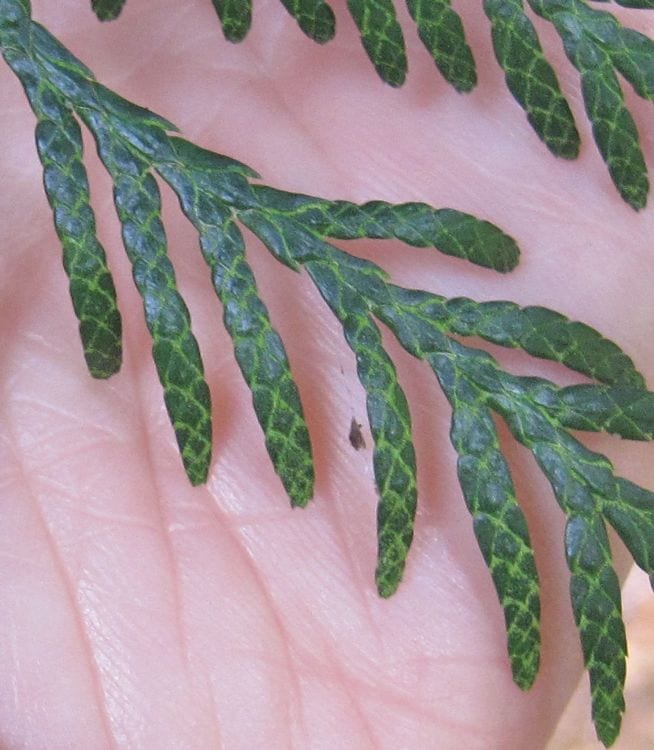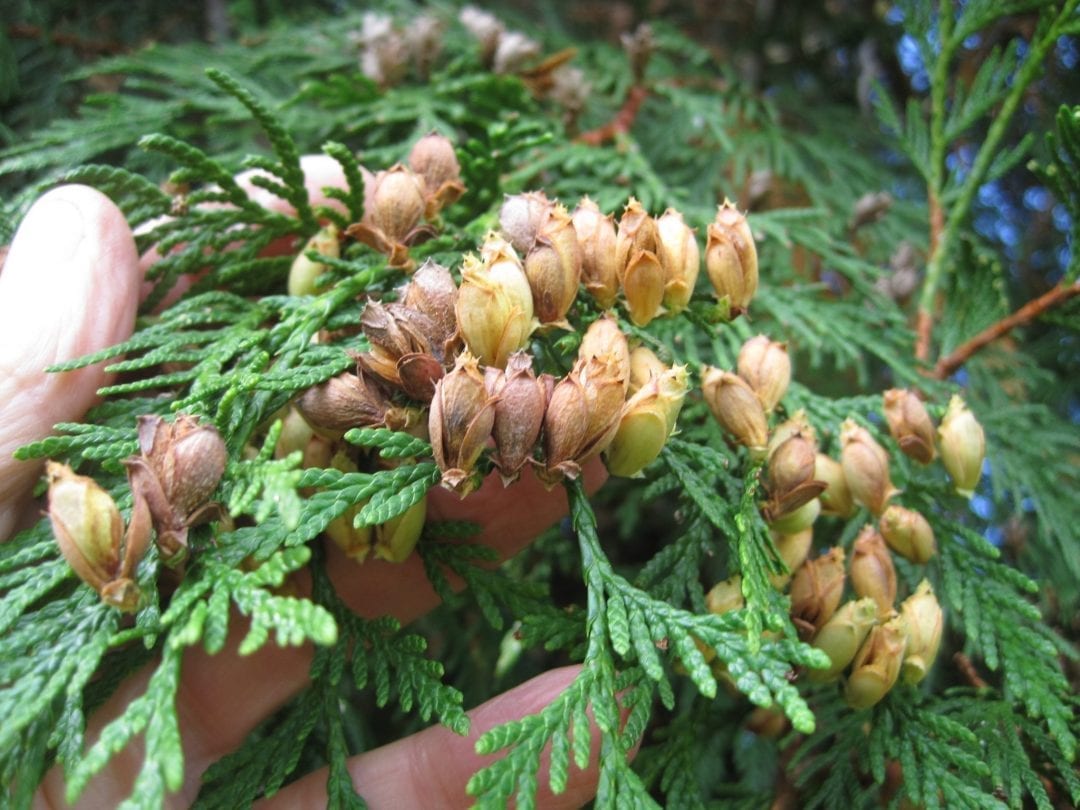Two False Cedars – Incense Cedar and the Western Red Cedar
Two trees – the Incense Cedar and the Western Red Cedar – are called cedars but are not ‘true’ cedars; they get their name from having wood that smells similar to the ‘true’ cedars – Cedar of Lebanon, Deodar and Atlas Cedar. They are commonly called ‘false cedars’. They can be identified by differences in their leaves and cones.

The Incense Cedar, a conifer native to California, was introduced to Britain in 1853. It is in fact a member of the Cypress Family. The scale-like leaves can be confused with the Lawson Cypress or Western Red Cedar but the cones are quite different. The leaves generate an aromatic scent when crushed. The tree is grown in large parks, gardens and by roads.

The Western Red Cedar, a conifer native to Western Canada and USA was introduced to Britain in 1853. It can grow very rapidly and is widely planted in gardens, parks and forestry plantations. Its scale-like leaves are similar to the Lawson Cypress but its flask-shaped cones are different and can be confused only with the Incense Cedar. Its leaves emit a fruity smell when touched.

The leaves of the Incense Cedar are in the form of over-lapping scales that are close to the shoot until they reach the pointed tips. The scale-like leaves are longer and cling closer to the shoot than those of the Lawson Cypress or the Western Red Cedar.

The scale-covered shoots of the Western Red Cedaer hang down in flat sprays. The leaves emit a strong smell of pineapple if they are crushed between the fingers. This is a very good way of identifying a Western Red Cedar if you can’t see any cones.

The cones of the Incense Cedar hang down like small ornamental flasks.

The Western Red Cedar has flask-like cones but they are about half the size of the Incense Cedar cones and stand upright. Photo taken in August.
